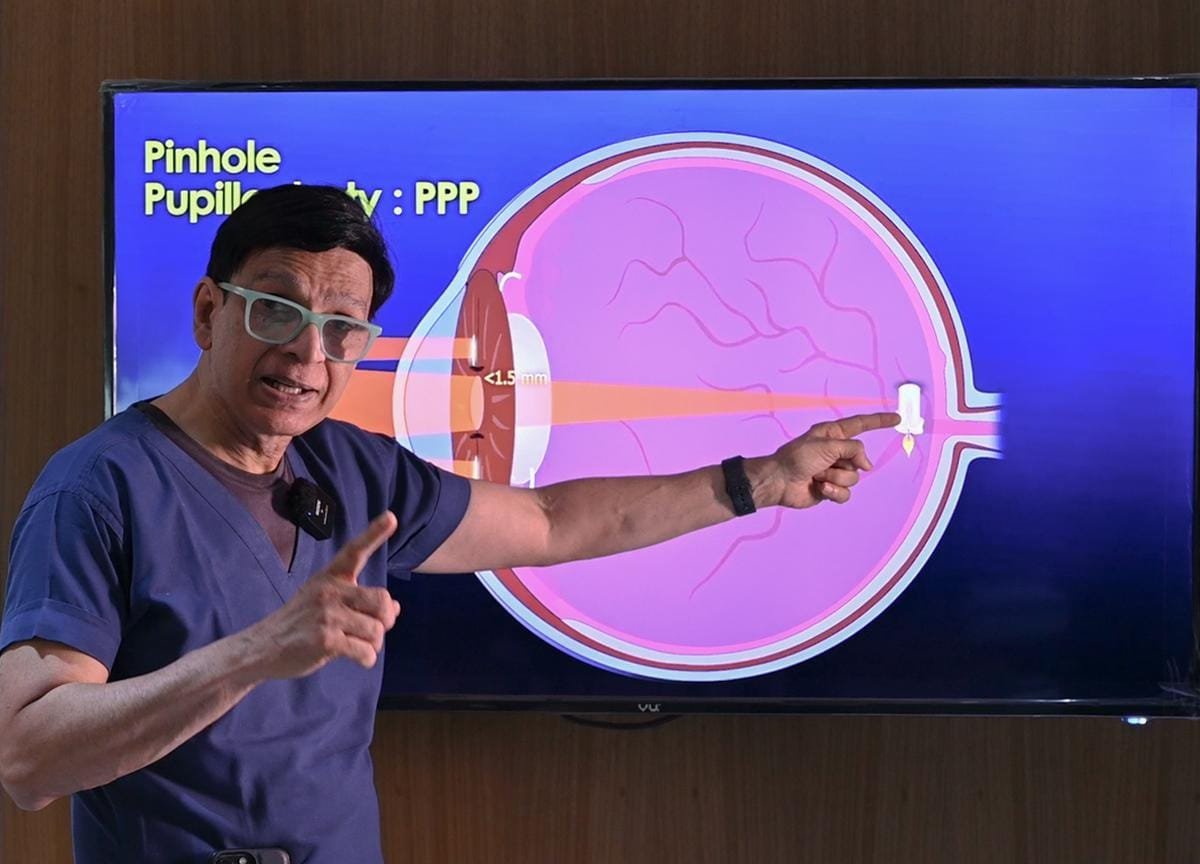
In a world where millions await donor corneas, Prof. Dr. Amar Agarwal has pioneered a pathbreaking solution that is changing the landscape of eye care—Pinhole Pupilloplasty.
As Chairman of Dr Agarwals Eye Hospital Group and a globally respected innovator in ophthalmology, Dr. Agarwal has consistently pushed boundaries with novel surgical techniques. In this candid conversation, he shares the inspiration, science, and vision behind this groundbreaking procedure that’s giving hope to patients across the world.
Q: What inspired you to create Pinhole Pupilloplasty (PPP)?
A: The inspiration came from a very real problem: the global scarcity of donor corneas. With around 20 million people waiting for a transplant, it was clear we needed an alternative. I wanted to design a technique that would bypass the dependency on donor tissue yet still offer clear, quality vision. That’s how Pinhole Pupilloplasty was born—a suture-based, intraocular procedure that reshapes the pupil into a small central aperture, filtering out distorted rays and focusing only the best light onto the retina.
Q: What makes PPP such a game-changer compared to traditional corneal transplants?
A: Corneal transplants, while effective, come with their share of risks—rejection, need for long-term immune suppression, high cost, and of course, donor dependency. PPP sidesteps all of that. It’s minimally invasive, quicker to heal, and much more affordable. The best part? It doesn’t require any donor material or expensive machines. Just standard ophthalmic instruments and good surgical skill.
Q: How exactly does the procedure improve vision in patients with corneal irregularities?
A: Think of the pinhole effect like a camera aperture. When we reduce the pupil size and centralize it using a fine suture technique, it naturally eliminates peripheral light distortions caused by irregular corneas—conditions like keratoconus, scarring, or higher-order aberrations. What remains is crisp, focused light that dramatically improves clarity, even in eyes that couldn’t benefit from glasses or contact lenses.
Q: Is this technique accessible to eye care centers in low-resource settings?
A: Absolutely, and that’s the beauty of PPP. It doesn’t require high-end technology or complex tools. It can be performed with basic instruments and has already been adopted in countries like Russia, Vietnam, and Egypt. In fact, our own hospital group—spread across 250+ centers globally—is scaling up training to ensure the technique reaches even the most remote corners of India and Africa.
Q: Has the global ophthalmic community embraced this innovation?
A: Yes, with great enthusiasm. I had the honor of presenting PPP at international platforms, and the response was overwhelmingly positive. This year, at the ASCRS Film Festival in Los Angeles, the technique won an award, which was incredibly validating. Surgeons around the world have started adapting it into their practice, and we continue to receive invitations to conduct training programs across continents.
Q: Can this be offered to all patients with vision problems due to corneal issues?
A: It’s not a blanket solution. PPP works best when the central cornea is clear and stable. It’s not suitable for eyes with dense central opacities or active corneal diseases unless those issues are addressed first. Patient selection is critical, and thorough preoperative assessment ensures we choose the right cases for the best results.
Q: What’s your vision for the future of PPP?
A: My vision is very simple: to make clear sight an achievable goal for every patient, no matter where they live or what resources they have. With PPP, we can rewrite the story of millions who were told they’d never see clearly again. I believe this is just the beginning. With training, outreach, and collaboration, we can make this technique a new global standard in vision care.



